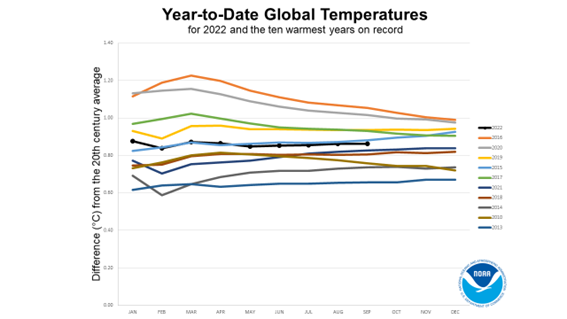Why using small green spaces can help cities to cool down
Cities are warming 29% faster than rural areas according to the World Economic Forum.
A study made by the National Center for Environmental Information of the United States, has determined that 2,000 urban megacities temperatures are warming average 0.69ºC a decade for daytime temperatures.
As we know global warming is a fact and heatwaves are becoming more frequent and severe all around the world. Climate change is the biggest contributor to rising temperatures in 90% of cities studied. Therefore, urban areas, in particular, are being more exposed to this phenomenon due to the urban heat island effect, which occurs when urban areas absorb and retain more heat than surrounding rural areas. However, China and India for example has shown that urban expansion is also a contributing factor to rising temperatures by more than 0.23ºC per decade in these cities.

One of the main alternatives to combat these phenomena is using small green spaces to help cities cool during heatwaves. Urban greening has offset an average of 0.13ºC of surface warming per decade in European cities.
Small green spaces, such as parks, gardens and trees have a natural cooling effect since the different plants and trees absorb solar radiation and release water vapor though a process called transpiration. This process cools the air around the plant and can reduce local temperatures by up to 5 degrees Celsius.
For instance, Amsterdam is creating a project called RESILIO that is focused on repurposing rooftops to help the city and reduce the risk of flooding. These small green roofs can store rainwater allowing the plants and vegetation to grow and reduce heatwaves. The project was launched in 2012 and it has installed 10,000 square meters of smart rooftops.
Such as Amsterdam, the city of Zhuhai in China is beginning to participate in a pilot project called ‘Sponge city’. The process involves the utilization of permeable and porous bricks and concrete in roads and pavements to store water and prevent flooding. Furthermore, studies suggest that implementing these porous surfaces can also decrease air temperatures by up to 1°C.
As we mentioned before, the small green spaces in cities can reduce the amount of direct sunlight that reaches the ground. In fact, a study conducted by the University of Manchester found that shade from trees can reduce surface temperatures by up to 30ºC. They can also create evaporative cooling as the water evaporates from the surface of plants and trees by increasing humidity and providing a cooler effect similar to an air conditioner. The shade of the trees can also help to reduce energy consumption and can help to reduce greenhouse gas emissions.
Green spaces have a significant impact on keeping cities cool during heatwaves. Many countries have already started to implement this alternative as a solution to lower urban temperatures due to their natural cooling effect. It is essential that governments, institutions, and people knowledge its importance to help mitigate the effects of global warming.
When you subscribe to the blog, we will send you an e-mail when there are new updates on the site so you wouldn't miss them.

